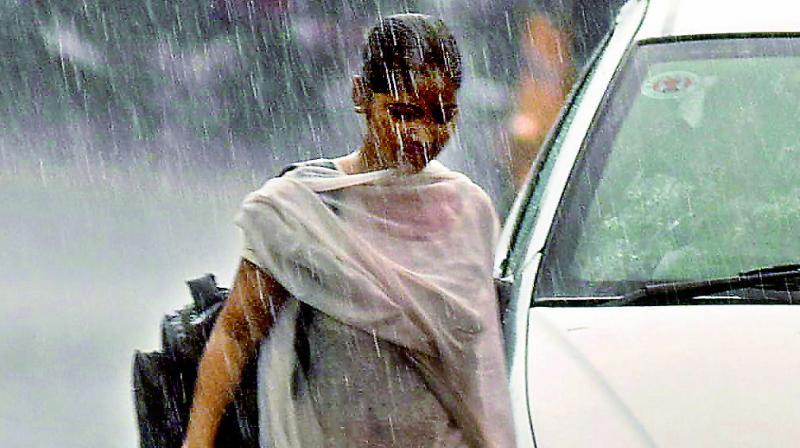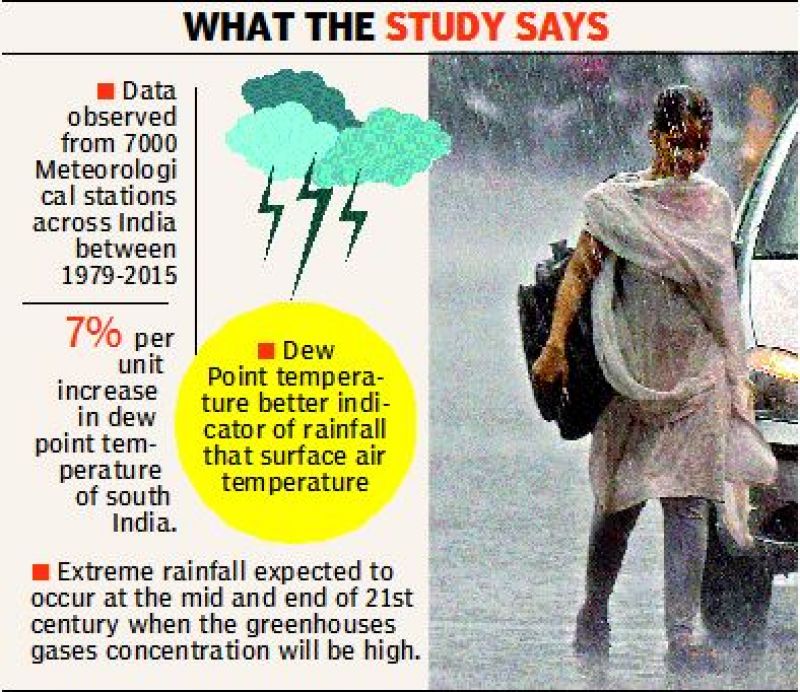Rainfall to be intense in South, Central parts: Study

Hyderabad: Southern and central parts of the country would experience more intense rainfall compared to North owing to increasing global warming, according to researchers at the Indian Institute of Technology (IIT-Gandhinagar).
After observing the rainfall patterns between 1979 and 2015, it was declared that the yearly maximum rainfall increased across the country except for the North-Eastern parts and Jammu and Kashmir. The increase in precipitation (any form of water that falls from the sky be it liquid or solid) had been noted in South. However, there was also a surprising increase in dew point temperature when air gets saturated with moisture.

Head of water at IIT Climate Lab Vimal Mishra told Deccan Chronicle, “There could be several reasons why the North won’t be as affected as the South and one of them is the presence of aerosols in the air in the form of dust. What is happening in the South and Central India is that there is an increase in the temperature due to human activities that are harming the environment which means that there is an increase in the moisture holding capacity of the air which in turn will lead to extreme rainfall.”
What determined this increase was ‘anthropogenic’ warming caused by man-made emissions leading the environment to take a turn for the worse.
The study said the anthropogenic warming had gone up because of high deforestation and burning of fossil fuels, causing an abundance of carbon dioxide in the air. The amount of carbon dioxide produced by humans far exceeded the normal limit let out by respiration or decay.
Climate change researcher Shyam Sunil S said, “We are definitely harming our environment more than we think. Deforestation is one of the key problems that will lead to changing rain patterns and extensive rainfall will not be healthy for the environment or human habitats. The temperature will continue to rise.”
The researchers at Gandhinagar said there should be better infrastructure to escape the after effects of this extensive rainfall. “Once cities fall prey to rainfall, they will begin flooding and we need to have infrastructure in place that can absorb the same and also have a better drainage facility or else we stand to lose many livelihoods,” said Dr Mishra.
This summer may be a scorcher
The Indian Meteorological Department on April 1 issued a warning that average temperatures in most parts of the country were expected to be ‘above normal’ during the summer between April and June, though the solace was that monsoon would be on time
The state of Telangana and coastal Andhra Pradesh fell in the core heat zone where heat wave condition could be expected. However, IMD said the temperature in the East, the East-Central and the South, which included coastal Andhra Pradesh and Telangana, was likely to be lower than the usual, indicating that the onset of monsoon would be on time.
The warning said, “Upcoming hot weather season (April to June) is expected to have the above normal sub-divisional average seasonal temperatures (maximum, minimum and mean) over most of the country. Normal heat wave conditions are likely over core heat wave zone of the country.”
The year 2017 was recorded as the hottest so far by the IMD and other meteorological institutes across the country. This was when 2016 was recorded as the hottest year since 1901.
In Hyderabad, it was moderate to heavy (at times) rain on Monday evening.

